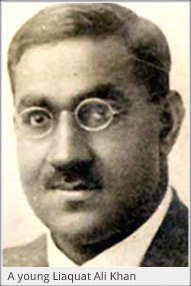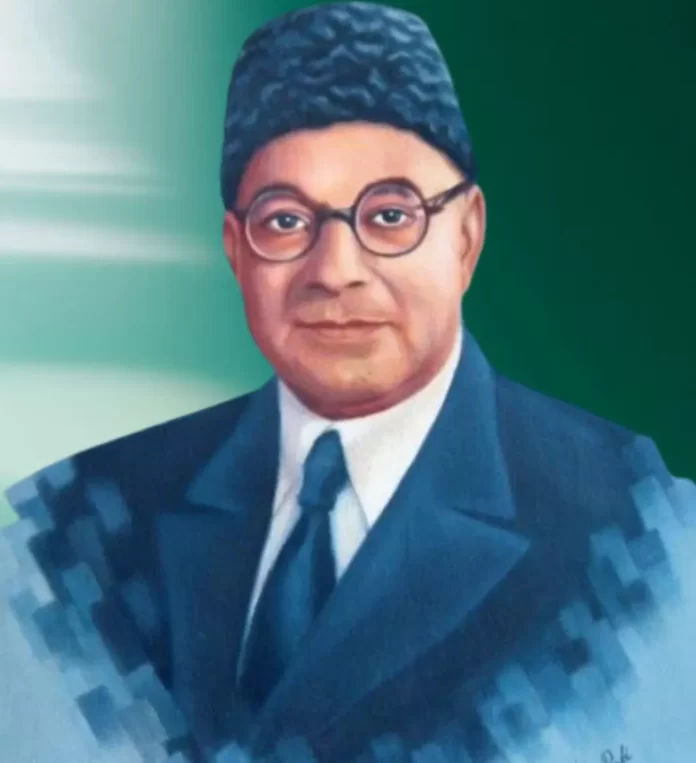After the Objectives Resolution was passed in 1949, the Constitution Assembly set up a number of committees to draw the future constitution on the basis of the principles given in the Objectives Resolution. The most important among those committees was the Basic Principles Committee set up on March 12, 1949, by Khawaja Nazimuddin on the advice of Prime Minister Liaquat Ali Khan.
The main function of this committee was to determine the basic principles of the future Constitution of Pakistan. The committee comprised 24 members. Maulvi Tamiz-ud-din Khan headed it and Liaquat Ali Khan was its Vice President. The committee presented its interim report to the Legislative Assembly in 1950. This was a short document presenting the guidelines and principles of the future Constitution of Pakistan.
Representatives of East Pakistan raised objections against the report. The main criticism was against the quantum representation in the Central Legislature. East Pakistan, with a majority of the population, was given an equal number of seats in the Upper House as West Pakistan, thus reducing the representation of the majority of the population in Pakistan by one-fifth. East Pakistan representatives also did not like Urdu being declared as the only national language of Pakistan.
Liaquat Ali Khan agreed to consider the objections with an open mind. He, therefore, postponed the deliberation of the Constituent Assembly in order to enable the Basic Principles Committee to examine and consider suggestions that might be made by the people regarding the principles of the Constitution. In order to include public opinion, Liaquat Ali Khan called forth general comments and suggestions by the public on the report. A large number of proposals and suggestions were sent by the public, which were examined by a special subcommittee headed by Sardar Abdur Rab Nishtar. The setting up of the committee was a right and commendable step, but its working was immensely affected by the assassination of Liaquat Ali Khan. The subcommittee, however, gave its report to the Basic Principles Committee in July 1952, which was presented by Khawaja Nazimuddin in the National Assembly on December 22, 1952.
 According to the Basic Principles Committee Report, the head of the state was to be a Muslim, elected by a joint session with the majority vote of the Central Legislature for a period of five years. The Prime Minister was to be appointed by the head of the state. The Central Legislature was to consist of two houses: the House of Units with 120 members and the House of People with 400 members. There were to be three lists of subjects for the division of power between the Federation and the Units. Adult franchise was introduced. The judiciary was to be headed by the Supreme Court of Pakistan consisting of a Chief Justice and two to six other judges. The Chief Justice was to be appointed by the head of state. There was to be a High Court for each of the units of East Pakistan, Punjab, Sindh Baluchistan and the N. W. F. P. A Board of Ulema was to be set up by the head of state and provincial governors. The Board of Ulema was to examine the law making process to ensure that no law was passed that went against the principles of the Quran and Sunnah. The Objectives Resolution was adopted as a preamble to the proposed Constitution.
According to the Basic Principles Committee Report, the head of the state was to be a Muslim, elected by a joint session with the majority vote of the Central Legislature for a period of five years. The Prime Minister was to be appointed by the head of the state. The Central Legislature was to consist of two houses: the House of Units with 120 members and the House of People with 400 members. There were to be three lists of subjects for the division of power between the Federation and the Units. Adult franchise was introduced. The judiciary was to be headed by the Supreme Court of Pakistan consisting of a Chief Justice and two to six other judges. The Chief Justice was to be appointed by the head of state. There was to be a High Court for each of the units of East Pakistan, Punjab, Sindh Baluchistan and the N. W. F. P. A Board of Ulema was to be set up by the head of state and provincial governors. The Board of Ulema was to examine the law making process to ensure that no law was passed that went against the principles of the Quran and Sunnah. The Objectives Resolution was adopted as a preamble to the proposed Constitution.
The Basic Principles Committee’s report was severely criticized and raised much bitterness between East and West Pakistan. The Prime Minister, Khawaja Nazimuddin, however, welcomed the report and commended it as a valuable document according to the aspirations of the people of Pakistan. But the fact was that the nation was not satisfied with the report and hence there was a serious deadlock in making of the constitution.
This article was last updated on Sunday, June 01, 2003






